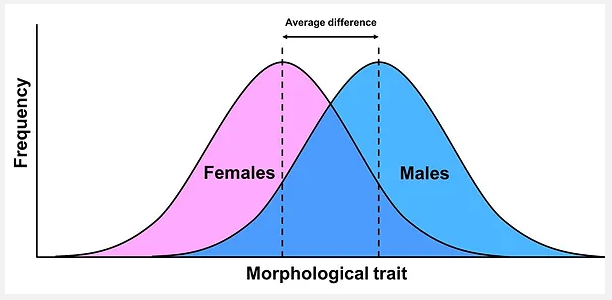Welcome to the Let Kids Be community! This campaign aims to protect children and adolescents from making irreversible decisions about their bodies at too young an age. There is a huge (and growing) number of arguments and lines of evidence to support a ban on medical transitioning for minors. Our goal with this blog is to pass along this information in an accessible way that you can use in your advocacy to protect young people.
To start, we need to go all the way to the mislaid foundations that led to medical transitioning for minors becoming an accepted practice. Then we need to lay a better foundation for how our society should approach conversations about gender, gender identity, and gender expression.
The foundations start with anthropology – that is, the study of human beings. If we get our anthropology wrong, we’ll likely come to the wrong conclusions and the wrong solutions to a variety of problems. But if we get our anthropology right, we have a much better foundation to build upon.
So, what are human beings, anyways?
A very basic truth about human anthropology is that every human being is biologically male or female. Sexuality and sexual development begin with genetics. From the moment of fertilization, every human being is designed to develop either as a male (primarily determined by the presence of a Y chromosome) or as a female (primarily determined by the absence of a Y chromosome). As the cells of a zygote divide and multiply, each cell in that human body bears the chromosomal markers of the person’s sex. Throughout a person’s entire lifespan, those genetic markers remain the same. They are fixed. Sex is not “assigned” at birth only to evolve over the course of one’s lifetime. It is genetically determined at conception and, in nearly all cases, easily recognized at birth or even in utero. Disorders of sexual development are rare and are referred to as disorders because they are inconsistent with the natural sexual binary.
Throughout our lives, our sexual development continues with hormones. As a human body develops in utero and through puberty, our chromosomes play a dominant role in the production of sex hormones. While estrogen and testosterone are both present in males and females, greater levels of testosterone are present in males and greater levels of estrogen are present in females. These hormones become especially important during puberty when they spur the development of reproductive systems.
The human reproductive systems are generally considered in biology to be the key differentiators between males and females. Males have the capacity to produce sperm and females the ability to produce eggs and bear young. The complementary male and female reproductive systems are designed to work together to create new human beings.
Sexual development and differentiation include differences in appearance aside from primary sex characteristics. Secondary sex characteristics in males include more facial hair, relatively thick and dark body hair, thicker and tighter skin, a deeper voice, a larger face, a more prominent brow, nose, and chin, and an Adam’s apple. Females are characterized by relatively sparse and light body hair, a smaller face, a higher pitched voice, and the presence of breasts. People are able to identify an adult’s sex with an incredible degree of accuracy merely by observing his or her face.2
Although the differences in secondary sex characteristics are the most visible aspect of our sexual differentiation, sex is not reducible to sex characteristics. Sexual differences extend beyond genetic sex, sex hormone levels, reproductive capacity, or primary or secondary sex characteristics, most of which are categorical differences. A burgeoning body of literature reveals other statistical differences between the sexes, including the percentage of muscle mass and fat tissue, hearing ability, susceptibility to diseases, learning styles, and patterns of brain activity.*

(Mark Yarhouse, Understanding Gender Dysphoria (Downers Grove, IL: InterVarsity Press, 2015), 37.)
These statistical sex differences can be illustrated by overlapping bell curves. For example, males will, on average, be taller and physically stronger than women, though there are some women who are taller and stronger than some men. The consequences of these strength and size differences are obvious. For example, they account for the statistical differences in sport records, where all male sports have faster, stronger, or longer world records than those set by elite athletes in women’s sports.
Foundational sexual differences in the genetic code direct each person’s complex and marvelous path of growth and development into either a man or a woman. These biological differences are evident in different reproductive capacities, but also in many other ways. None of these differences make males or females unequal as persons. Rather, sexual difference is simply something to acknowledge as a fundamental part of who we are as human beings.
*V. Bruce et al., “Sex Discrimination: How Do We Tell the Difference between Male and Female Faces?,” Perception 22, no. 2 (1993): 131–52, https://doi.org/10.1068/p220131.
